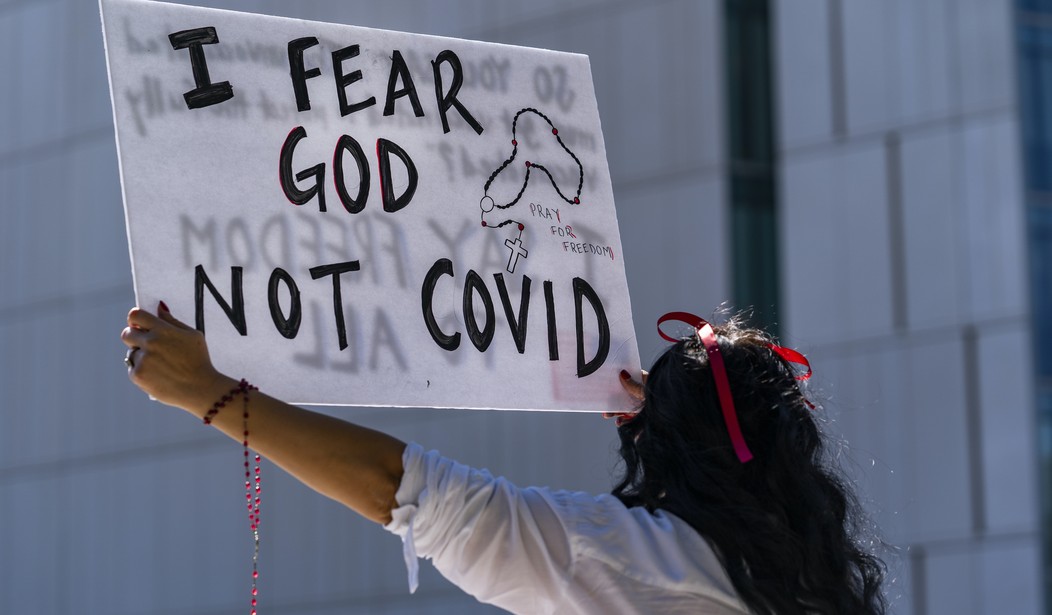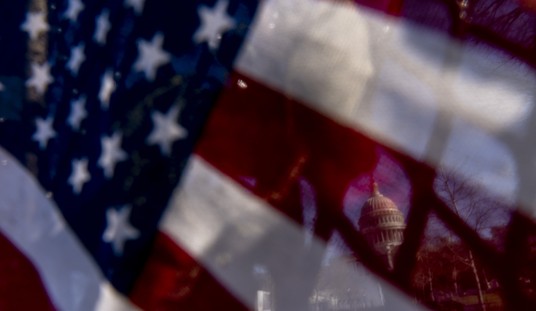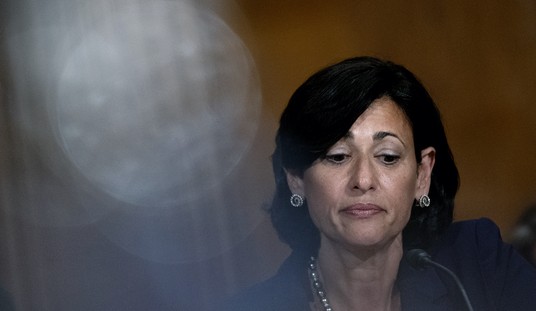Scientist Eric Topol says yes. If you read this post on Thursday, you know why. As much as we all dearly wish that the degree of vaccine immunity plus natural immunity across the U.S. population has finally made us wave-proof, the evidence from Europe suggests otherwise. EU countries with vaccination rates much higher than ours are seeing cases rise, in some instances (i.e. Germany) to their highest level of the pandemic. Whatever the magical threshold of herd immunity is in the age of Delta, no one seems to have hit it yet.
Or have they? More on that in a moment.
Even if herd immunity is theoretically possible, it’s likely so far out of reach for the U.S. that the CDC has begun downplaying the possibility of ever attaining it. “Thinking that we’ll be able to achieve some kind of threshold where there’ll be no more transmission of infections may not be possible,” said one member of the agency’s epidemiology task force recently. In the early days of COVID when the original virus was seeding infections, scientists estimated that 70-85 percent of the public would need to be immune before cases fell permanently. With the rise of Delta, estimates are now above 90 percent. And because immunity wanes, the share of the population that’s protected from COVID doesn’t rise inexorably. It can decrease too, which is why countries are now scrambling to deliver boosters to adults.
The bottom line, says Topol, is that there’s no reason to believe we’re going to dodge a winter wave. Americans are emotionally exhausted from the pandemic and eager to return to normal after a year of vaccination so they’ve seized on the decline in cases this fall as evidence that COVID is finally in retreat. But cases have begun to rise again in the past few weeks. Some state health-care systems, like Colorado’s, are already stressed. Unless the degree of natural immunity is vastly higher in the U.S. than it is in other western countries, we’re about to get slammed again.
It’s deja vu, yet again. The pandemic first hit Europe in March 2020, and Americans were in denial, thinking it wouldn’t happen here. Then, later in the year, the Alpha variant wave took hold in the United Kingdom and the United States was unprepared. This recurred with Delta in the summer of 2021. Now, in the fall of 2021, Europe is the outlier continent on the rise with Covid, with approximately 350 cases per 100,000 people and many countries are soaring to new records. This not only involves eastern and central Europe, where there are some countries with low vaccination rates (such as Georgia, only 24% fully vaccinated) and caseloads as high as 160/100,000 (Slovenia), but also western Europe, such as Austria, Belgium, Ireland and several others. Indeed, in Germany, leading virologist Christian Drosten recently warned their death toll could be doubled if more aggressive mitigation and vaccination strategies were not quickly adopted…
That brings us to the United States, sitting in the zone of denial for the fourth time during the pandemic, thinking that in some way we will be “immune” to what is happening in Europe. That somehow the magical combination of mRNA vaccines with only 58% of the population fully vaccinated, a relatively low proportion of booster shot uptake, a start to vaccinating teens and children, and a lot of prior Covid, and little in the way of mitigation, will spare us. That’s no magic. Add to that the complete lack of availability of cheap, rapid home tests to screen for infectiousness. Unlike Europe, the US was not capable of uncoupling cases from hospitalizations and deaths during its initial Delta wave – fully 75% of hospitalizations and 66% of deaths occurred compared to its third wave peak before vaccinations were available.
There are around 260 million adults in the U.S., 81 percent of whom have been vaccinated. If you assume that half of the remaining unvaccinated population has natural immunity, that’s still 25 million American adults at risk this fall. Figure a quarter of them are old enough to potentially suffer life-threatening illness from the disease. That’s a lot of infections and hospitalizations in theory.
Some epidemiologists are disheartened by what they see coming:
“Today is a really sad day,” epidemiologist Ali Mokdad, who has been tracking the coronavirus pandemic since the beginning at the University of Washington, told CNN. “Cases are going up. It was coming down. This is at a time when the United States has all the tools we need to prevent a surge, all the tools we need to save lives. We have the best vaccines, and we have plenty of them,” he said.
“And people are not willing to get them.”…
“Nobody is listening,” Mokdad said morosely. He said he and fellow epidemiologists were discussing how they could bring attention to the dire situation.
“Some of us we were talking about going on a hunger strike. We are really frustrated. It’s depressing that we know how protect our population and we are not doing it,” he said.
Mokdad fears that even states like Florida that recently suffered a major surge could be hit hard again as immunity wanes in un-boosted senior citizens. Last year holiday socializing ignited the worst wave of the pandemic in the U.S. despite the fact that vaccines hadn’t arrived yet and many Americans were still behaving ultra-cautiously about COVID. This year, with vaccines ubiquitous and a widespread belief that the worst is behind us, socializing is destined to be more prevalent and less cautious. What kind of wave will that produce?
The latest data from the NYT shows that cases have risen over the past two weeks in all but two of America’s most highly vaccinated states. Having a high share of your population immunized is no guarantee that you won’t experience a surge — of cases, at least:

On the other hand, you’ll note that none of those states has seen a major rise in hospitalizations lately. Maybe that’s only temporary — hospitalizations lag behind cases — but it may also be a function of their vaccination rate. The vaccines aren’t great at preventing transmission but they are great at preventing severe illness, which means the states listed above could experience more of a “casedemic” this winter than a true crisis. In fact, care to guess which state has had the lowest share of people hospitalized since the start of the pandemic? Right: It’s Vermont, which boasts the highest vaccination rate in the United States. Maine and Puerto Rico, which likewise have vaccinated more than 70 percent of their populations, are also in the bottom five of hospitalizations per capita.
Which brings me back to the point up top. Are there any countries that might have quietly reached herd immunity already? Well, Portugal and Spain have the highest vaccination rates in the EU, with 89 and 82 percent, respectively, having received a first dose. While most western European countries are seeing cases climb, Portugal’s and Spain’s case curves look like this:


It seems likely that both countries are well over 90 percent at this point in terms of total immunity. (Spain was hit tremendously hard by COVID last year, seeding lots of natural immunity.) Maybe they’ve finally cleared the herd immunity bar.
Or … maybe not. Singapore also has a fantastically high vaccination rate with 88 percent having received at least one dose. Their case curve looks like, er, this:

“Currently, unvaccinated persons make up a sizeable majority of those who require intensive inpatient care, and disproportionately contribute to the strain on our healthcare resources,” said the Singaporean government recently about the surge, announcing that going forward those who are unvaxxed by choice will have to foot the bills for their own medical care(!). We could spend all day trying to pick apart why Singapore is seeing a spike while Portugal and Spain aren’t: A less effective type of vaccine, perhaps; greater waning immunity due to an earlier vaccination push this year; more lax social-distancing restrictions; seasonality; on and on. But the bottom line is that, apparently, even an 88 percent vaccination rate won’t make you wave-proof.
Although it’s highly likely to make that wave smaller and *much* less deadly than it otherwise would have been.
I’ll leave you with Scott Gottlieb, who’s been optimistic that we’re in the last stages of our last surge — but not quite done yet.
"Delta's not done." @ScottGottliebMD says there are parts of the country where Covid cases could pick up. https://t.co/B0QSCQgQAg pic.twitter.com/QQYrvu8dPs
— CNBC (@CNBC) November 12, 2021







Join the conversation as a VIP Member